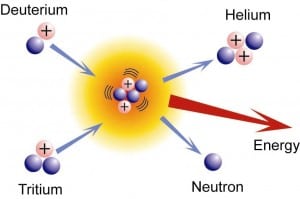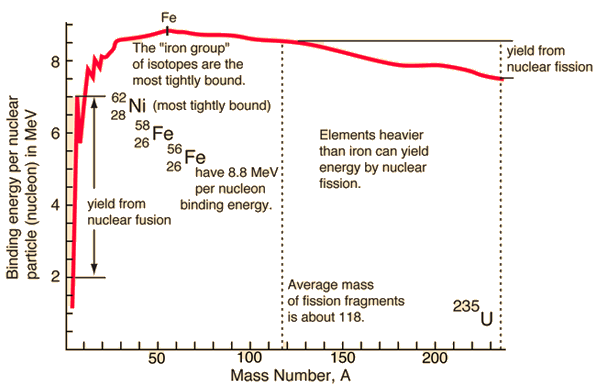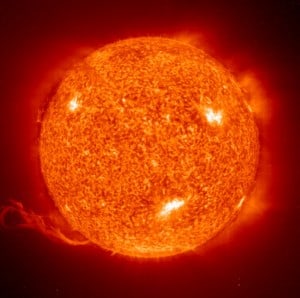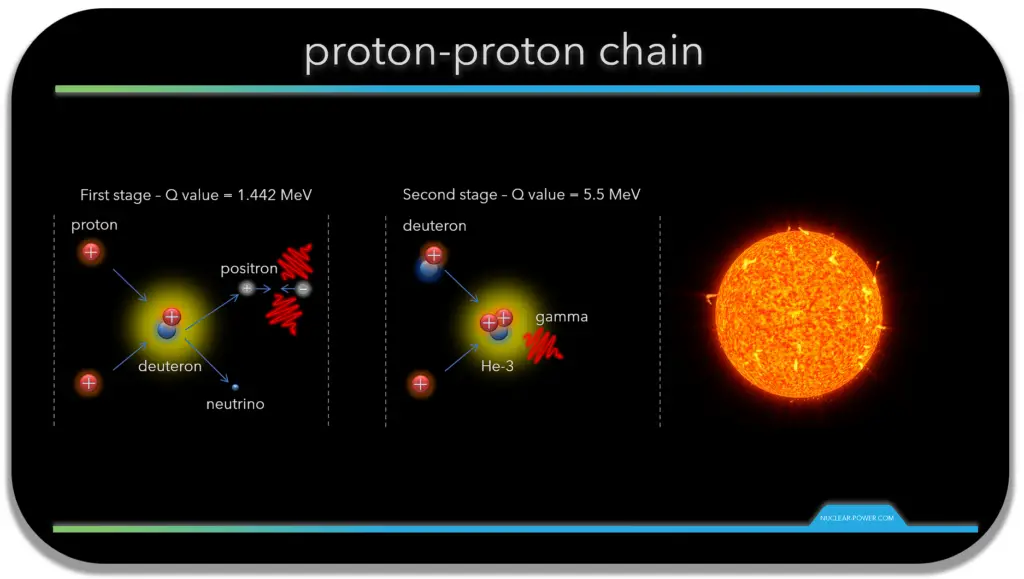In nuclear physics, nuclear fusion is a nuclear reaction in which two or more atomic nuclei collide at very high energy and fuse together into a new nucleus, e.g.,, helium. If light nuclei are forced together, they will fuse with a yield of energy because the mass of the combination will be less than the sum of the masses of the individual nuclei. Suppose the combined nuclear mass is less than that of iron at the peak of the binding energy curve. In that case, the nuclear particles will be more tightly bound than they were in the lighter nuclei, and that decrease in mass comes off in the form of energy, according to the Albert Einstein relationship.

Source: chemwiki.ucdavis.edu
For elements like uranium and thorium, fission will yield energy. Fusion reactions have an energy density many times greater than nuclear fission, and fusion reactions are millions of times more energetic than chemical reactions.
Fusion power offers the opportunity of an almost inexhaustible source of energy for the future, but fusion technology presents real scientific and
engineering challenges. For human potential nuclear energy sources, the deuterium-tritium fusion reaction controlled by magnetic confinement seems the most likely way. But nowadays also this way contains several insurmountable engineering challenges.

Source: hyperphysics.phy-astr.gsu.edu
Fusion powers the Sun

Source: hyperphysics.phy-astr.gsu.edu
The Sun is a hot star. Really hot star. But all of the heat and light coming from the Sun comes from the fusion reactions happening inside the core of the Sun. Inside the Sun, the pressure is millions of times more than the surface of the Earth, and the temperature reaches more than 15 million Kelvin. Massive gravitational forces create these conditions for nuclear fusion. On Earth, it is impossible to achieve such conditions.
The Sun burns hydrogen atoms, which fuse to form helium nuclei, and a small amount of matter is converted into energy. At its core, the Sun consumes approximately 620 million metric tons of hydrogen each second. Hydrogen, heated to very high temperatures, changes from a gaseous state to a plasma state. Normally, fusion is not possible because the strongly repulsive electrostatic forces between the positively charged nuclei prevent them from getting close enough together to collide and for fusion to occur. The mechanism, how to overcome the coulomb barrier is by the temperature and by the pressure. At close distances, the attractive nuclear force allows the nuclei to fuse.
Proton-proton Fusion
During most of the Sun’s life, energy has been produced by nuclear fusion in the core region through the proton-proton chain. This process converts hydrogen into helium.
In general, proton-proton fusion can occur only if the kinetic energy of the protons is high enough to overcome their mutual electrostatic repulsion. The first step in all the branches is the fusion of two protons into a deuteron. As the protons fuse, one of them undergoes beta plus decay, converting into a neutron by emitting a positron and an electron neutrino.
It must be noted a deuteron-producing event is very rare due to it being initiated by a weak nuclear force. Diprotons are the much more common result of proton-proton reactions, but diprotons almost immediately decay back into two protons. The cross-section of the deuteron-producing reaction is so small that it has not been possible to measure it experimentally. This is very important because it significantly limits the reaction rate. The average proton in the core of the Sun waits 9 billion years before it successfully fuses with another proton. The Q value for the deuteron-producing reaction is plus 1.442 megaelectron volts.
The deuteron produced in the first stage can then fuse with another proton to produce the isotope of helium 3. The Q value is 5.5 megaelectron volts. This second process is mediated by the strong nuclear force rather than the weak force. Therefore, it is extremely fast in comparison to the first step. It is estimated that each newly created deuterium nucleus exists for only about one second before it is converted into helium-3. Helium-3 is then in various branches converted into helium-4.
And why is the first stage so important?
This energy supports almost all life on Earth by photosynthesis, and drives Earth’s climate and weather.
Deuterium-Tritium Fusion
The fusion reaction of deuterium and tritium is particularly interesting because of its potential of providing energy for the future.
3T (d, n) 4He
The reaction yields ~17 MeV of energy per reaction. Still, it requires an enormous temperature of approximately 40 million Kelvins to overcome the coulomb barrier by the attractive nuclear force, stronger at close distances. The deuterium fuel is abundant, but tritium must be either bred from lithium or gotten in the operation of the deuterium cycle.
